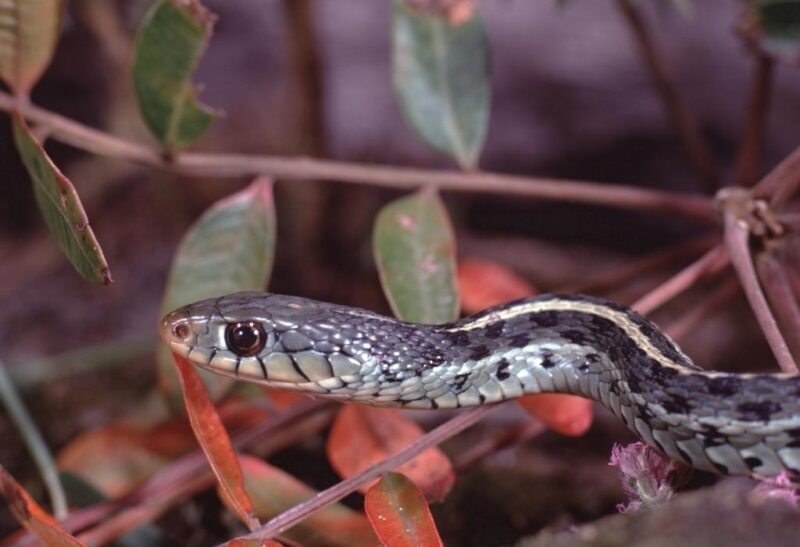Tennessee is not known for rich aquatic environments. However, the state has 50,000 miles of streams and rivers, making it a sanctuary for many water snakes.
What are the types of water snakes in Tennessee? Among the water snakes that can be found in Tennessee are the Cottonmouth, Eastern Ribbon snake, Diamond watersnake, Common Garter snakes, and more. These watersnakes can either be aquatic or semi-aquatic snakes, living primarily in marshes, ponds, lakes, rivers, and streams of Tennessee.
By reading this guide further, you will encounter more water snakes in Tennessee with their respective characteristics and information. So, if you wish to know more about these water snakes in Tennessee, consider reading on!
Table of Contents
Are There Poisonous Water Snakes in Tennessee?
The cottonmouth snakes are the only water snakes in Tennessee that are poisonous. These are also known as moccasins and ensue in West Tennessee and Northern Highland Rim countries.
9 Water Snakes in Tennessee
Cottonmouth

The Cottonmouth, also called Water Moccasin, is surely the most notorious water snake in Tennessee. These reptiles reside primarily in the western third of Tennessee, favoring wetlands and swamps to ponds and lakes.
These snakes have stout, plump bodies with a deep brown hue. The interior of their mouth is bright white, and when terrorized, they sizzle loudly and utilize their white mouths in a threat show.
While known for aggression, these vipers are not particularly aggressive. They do not chase humans, despite common beliefs. In fact, cottonmouths are far more likely to run or hide than attack.
These water snakes have a varied diet, including carrion, smaller snakes, fish, small mammals, frogs, and small water birds.
- Scientific Name: Agkistrodon piscivorus
- Appearance: The cottonmouth is a dark-pigmented, heavy-bodied snake that can grow up to 2 feet to 4 feet in length on average. The juvenile has a tan to brown color with much darker, red-brown crossbands comprising multiple speckles at the back of their bodies.
- Color: Yellowish olive to black
- Lifespan: 15 years to 20 years
- Length: 2 feet to 4 feet
- Diet: Frogs, smaller snakes, fish, small mammals, small water birds, and carrion
- Place Of Origin: United States (Florida, Virginia, North to Southern Illinois, Indiana, and West to Central Texas)
- Venomous: Yes
Common Garter Snake
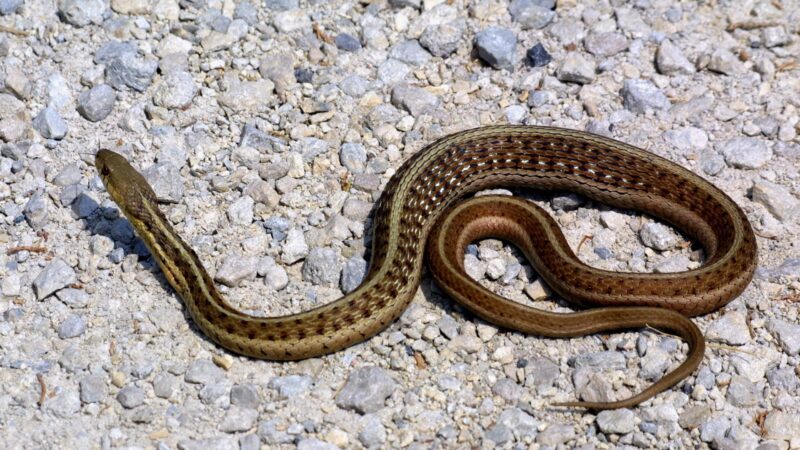
The Common Garter snakes are closely related to the ribbon snakes. They can be differentiated from ribbon snakes by their lighter, speckled coloration.
This is among the most common snakes in Tennessee, and it can be seen throughout the state, particularly close to wetlands and ponds. These snakes have various diets and are very opportunistic predators.
They usually eat earthworms, leeches, amphibians, snails, slugs, insects, small fish, crayfish, and other snakes.
- Scientific Name: Thamnophis sirtalis
- Appearance: The garter snake has a drawn three faint stripes pattern on their dark bodies, although the mark may vary. One thin stripe runs down the middle of the snake’s back, with a wide line on each side. The streaks are typically yellow in color but can be in tints of green, blue, or brown.
- Color: Greenish-brown, tan, black, or gray
- Lifespan: 6 years to 10 years
- Length: 18 to 26 inches long
- Diet: Earthworms, leeches, amphibians, snails, slugs, crayfish, small fish, insects, and other snakes
- Place Of Origin: North America
- Venomous: No
Eastern Ribbonsnake
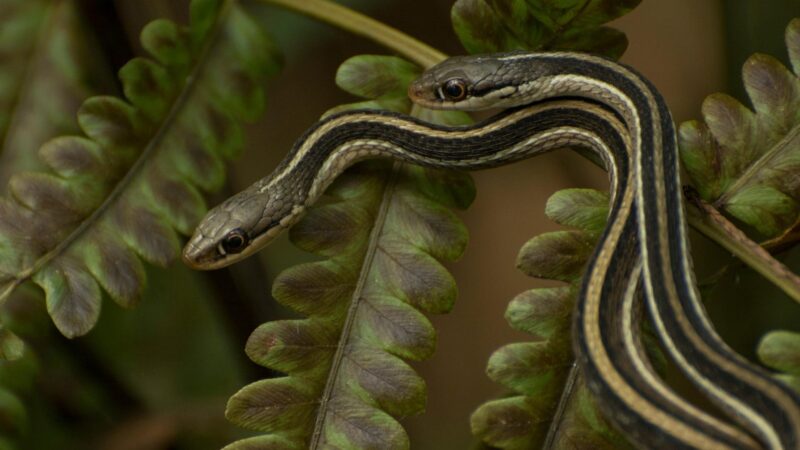
Eastern ribbonsnakes live throughout the Western part of the state and can be specified by three yellow stripes running down their backs. Though they don’t stay much time in the water, they never go far from it.
Heavily vegetated stream banks and rivers are their favored spots for living and hunting. Fish and amphibians are their primary prey, but these little snakes will also hunt insects.
These reptiles are carnivores. They mainly dine on fish like minnows, guppies, and goldfish in captivity. They also enjoy eating earthworms, crickets, grasshoppers, and tadpoles.
- Scientific Name: Thamnophis sauritus
- Appearance: Adults have an olive-black, bluish-black, or brown tint with one thin stripe maneuvering down the middle of the back and one streak steering along each side. The lines range in color and are generally tannish-brown, yellow, blue, or whitish-green. However, these streaks are often absent in some individuals.
- Color: Olive-black, bluish-black, brown
- Lifespan: 10 years to 11 years
- Length: 18 to 26 inches
- Diet: Fish, grasshoppers, earthworms, crickets, tadpoles, etc.
- Place Of Origin: Eastern North America
- Venomous: No
Western Ribbon Snake
The Western Ribbon snakes are slender snakes that can be recognized by the three light-colored stripes down their back. These snakes are almost constantly seen near water but don’t stay as much time in it.
These vipers are only in the four counties of the far Western part of Tennessee. They will crawl fast into dense vegetation whenever threatened rather than hiding in the water.
Their diet involves small frogs, minnows, and tadpoles, but they also eat spiders, small fish, newts, and earthworms.
- Scientific Name: Thamnophis proximus
- Appearance: Western Ribbon snakes have light undersides, specifically a light green or yellow. On the other hand, their backs are usually deep brown or black in color with paler side stripes.
- Color: Mint-green, black with white
- Lifespan: 3 years to 6 years (wild), 20 years (captivity)
- Length: 20 inches to 30 inches
- Diet: Frogs, toads, small fish, tadpoles, earthworms, spiders, and newts
- Place Of Origin: Western United States, Central America, and Mexico
- Venomous: No
Northern Water Snake
Northern water snakes possess more color variation than most species, varying from gray to brown to almost black in other individuals. Their color tends to dim with age, too.
They reside throughout the state and prefer calm waters, particularly lakes and ponds. You may often see them at the edge of the water since fish is their favorite prey.
Northern water snakes feed almost all hours but can be capped to daylight if night water temperatures are cool. They primarily consume fish and eat toads, frogs, insects, salamanders, and crayfish.
- Scientific Name: Nerodia sipedon
- Appearance: The Northern water snake can grow extensively up to two to four feet long. These snakes have high color variations and patterns that can be gray, tan, brown, or reddish-black. Older northern water snakes are often darker and without clear patterns.
- Color: Buff, tan, gray, brown
- Lifespan: 9 years and 7 months
- Length: 22 inches to 42 inches
- Diet: Fish, toads, frogs, insects, salamanders, crayfish, shrews, and mice (rare)
- Place Of Origin: Eastern and Central North America
- Venomous: No
Diamondback Water Snake
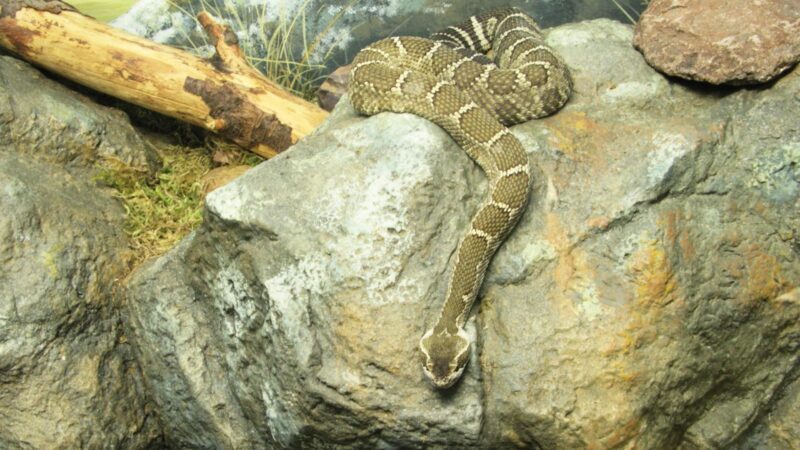
The Diamondback water snakes can be seen in Western and Middle Tennessee, particularly in Tennessee, Mississippi, and Cumberland river drainages. While they live closely in any aquatic habitat, they favor oxbow lakes, cypress swamps, and rivers.
In terms of diet, these snakes prefer feasting on slow-moving fish, such as catfish and frogs, as well as toads. Carrion is also a typical portion of their primary diet.
They primarily get nocturnal during the summer months and get diurnal or active during the day every winter.
- Scientific Name: Nerodia rhombifer
- Appearance: The appearance of diamondback water snakes differs a lot. However, most of these reptiles have multiple diamond-shaped markings on their backs, which is the reason for their name. They are typically olive or brownish in color overall and can have a dusky look when dried out from lolling in the sun.
- Color: Dark olive green, brown, deep brown
- Lifespan: 10 years
- Length: 30 inches to 48 inches
- Diet: Frogs, small fish, toads
- Place Of Origin: The Central United States and Northern Mexico
- Venomous: No
Southern Water Snake
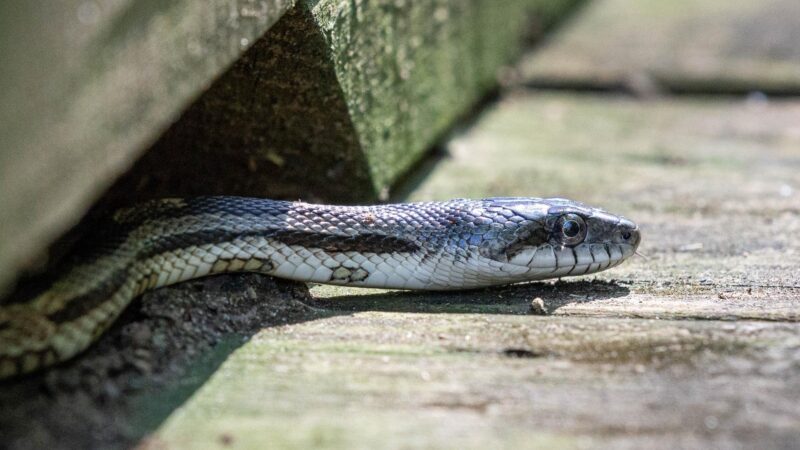
These snakes hold distinctive dark and light brown bands on their backs, making them look like venomous cottonmouth snakes. They can be seen in Reelfoot Lake in Tennessee and the counties bordering the Tennessee River.
They particularly love to hide in dense vegetation and on various aquatic prey, such as frogs, crayfish, small fish, salamanders, and tadpoles.
- Scientific Name: Nerodia fasciata fasciata
- Appearance: The southern watersnakes’ color varies by their subspecies, which means they can be brown, yellow-brown, black, gray, tan, or red. Their undersides have a dark, square mark or triangular areas, occasionally with wavy cross streaks.
- Color: Black, yellow-brown, brown, gray, tan, or red
- Lifespan: 7 years to 8 years
- Length: 22 inches to 42 inches
- Diet: Frogs, crayfish, small fish, salamanders, and tadpoles
- Place Of Origin: Southern and Eastern United States
- Venomous: No
Plain-Bellied Water Snake
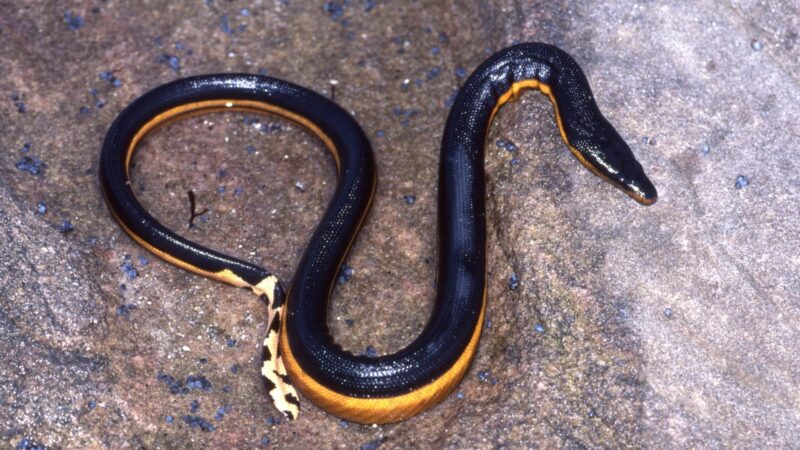
Plain-bellied water snakes, also known as Yellow-bellied water snakes, can be found in the Southwestern and South-central areas of Tennessee and the Cumberland and Tennessee rivers watersheds. These mid-sized snakes have a black tint on top of brown or light yellow bellies.
They like quiet, slow, or still-moving water and are more commonly found in swamps and lakes than in rivers. They primarily prey on toads, frogs, and salamanders, as well as fish occasionally.
- Scientific Name: Nerodia erythrogaster
- Appearance: Adults Plain-bellied water snakes are thick-bodied with uniformed reddish-brown or greenish-gray color. They have no patterns on their back, and their bellies, necks, and lips scales are nearly uniform reddish-orange or yellow color.
- Color: Brown, olive green, gray, black, and greenish-gray
- Lifespan: 8 years to 15 years
- Length: 30 inches to 48 inches
- Diet: Toads, frogs, salamanders, and fish (occasionally)
- Place Of Origin: United States
- Venomous: No
Mississippi Green Water Snake
The Mississippi green water snake can be found in the outermost western part of the state and thriving in the cypress swamps. They enjoy residing deep in the swamps and hunting tadpoles, frogs, and fish.
Adults have unique, half-moon-shaped yellowish markings on their bellies. They like to loll in tree limbs that overhang in the water.
This snake feeds primarily on fish, frogs, salamanders, and crayfish.
- Scientific Name: Nerodia cyclopion
- Appearance: Mississippi green water snakes are mid-sized, semi-aquatic reptiles with a dark greenish-brown shade. They also have small, vague dark markings.
- Color: Dark greenish
- Lifespan: 9 years
- Length: 30 to 45 inches
- Diet: Fish, frogs, salamanders, and crayfish
- Place Of Origin: Southeastern United States
- Venomous: No
Frequently Asked Questions
How Bad Are Snakes in Tennessee?
There are over 30 kinds of snakes in Tennessee, and most of them are not harmful to humans and are even helpful to the environment. There are only 4 known snakes in Tennessee that are venomous, but it constricts down further in the local area.
What Is the Most Poisonous Snake in Tennessee?
The Timber Rattlesnake is the biggest and most dangerous snake out of the 4 toxic snakes in Tennessee. These can be found across the state.
A large, heavy-bodied serpent around 36 inches to 60 inches long with a big, triangular head, and upright pupils. The coloration of their body is highly variable but is usually grayish with an ebony-tinted tail.
How Common Are Snake Bites in Tennessee?
According to a medical toxicologist in Tennessee, there are around 50 bites per year in the state, although snakes in Tennessee are not normally risky to humans. However, they strike when scared or threatened.
Summary
So, these are the nine water snakes in Tennessee that you can commonly find in Tennessee. Out of the nine water snakes, only the Cottonmouth snakes are poisonous and should be avoided at all costs.
Related: 8 Water Snakes in Missouri | The Ultimate Guide
List of Sources
Zimmerman, R. (2013). Thamnophis sirtalis. Animal Diversity Web.
Timber Rattlesnake *VENOMOUS, Crotalus horridus. Tennessee Wildlife Resources Agency.
Johnson, S. A. (2020). Harmless Watersnake or Venomous Water Moccasin?University of Florida.
Baker, C. Eastern Ribbon Snake (Thamnophis sauritus). University of Georgia.
